
Picture this: you’ve just launched your website with outstanding design, breathtaking visuals, and incredible user experience. Traffic starts pouring in as you excitedly anticipate a rise in conversions and sales. But weeks pass by, and your site still hasn’t made a dent on any search engine ranking results. What could be holding your website’s SEO potential back?
You dig deeper and discover the culprit—thin content pages that give little to no value, resulting in lower rankings and decreased visibility. Don’t let these silent saboteurs hinder your success! In this step-by-step guide, we’ll equip you with practical strategies to manage thin content pages effectively and transform them into valuable assets for increased SEO performance. Say goodbye to missed opportunities, and hello to an optimized online presence!
The first step in managing thin content pages for SEO is to identify them through a content audit. Once identified, you can either improve or remove the thin content pages. Improving can involve adding fresh, quality content, interlinking with other relevant pages, and optimizing with keywords. If removal is necessary, ensure that any backlinks point to another relevant page on your site or 301 redirect them. By managing your thin content pages effectively, you can improve your site’s overall authority and relevance in the eyes of search engines like Google.
Understanding Thin Content
Thin content is a common issue that many website owners face in terms of their website’s ranking on search engines. In simple terms, thin content refers to pages with little or no valuable information for users. It can include short blog posts, poorly written product descriptions, and irrelevant landing pages. Websites with thin content often experience poor rankings in search engines because they do not offer any real value to the user.
One way to think about thin content is as a high-calorie meal with little nutritional value. You may feel satisfied immediately after eating it, but over time, you will be left feeling hungry and unfulfilled. In the same way, thin content may provide a brief fling of attention from the reader, but over time, the lack of value and substance will leave them unsatisfied and unlikely to return.
For instance, consider an e-commerce site that has hundreds of products listed on its online store. Each product page includes only a small snippet of information about the product (a photo and a few bullet points). This kind of information would be fine if these pages were just transactional, however, this doesn’t work well for SEO purposes. In this case, each product page may have very thin content – little to no valuable information for users beyond what one can find on other websites that sell similar products. As a result, these product pages would be considered “thin” by Google’s standards.
To put it another way, imagine visiting a website that advertises itself as an authoritative source on health and fitness topics such as nutrition, exercise routines etc. But when you delve deeper into the site you find only generic articles with little detail or nuance; mere summaries from more dependable and reputable sources elsewhere online. Such a trend usually leads to mistrust among readers which makes your site lose significant E-A-T points.
Impact on SEO and Algorithm Updates
Google’s core goal is user satisfaction. When users search the internet for specific topics, they expect to find valuable information that satisfies their request. That’s why Google uses algorithms to give users the best possible experience by directing them to high-quality content pages. In recent years, Google has rolled out several algorithm updates aimed at demoting low-quality content and promoting sites that offer user value. These updates include Panda, Hummingbird, and BERT, among others.
Google Panda is one algorithm update that directly impacted websites with thin content. Panda demotes websites that publish low-quality content that offers little value to users. This update has made it essential for website owners to pay close attention to their website’s content quality by detecting thin content pages that are hurting their site’s overall performance.
Research shows that even a single page of thin content can negatively impact the ranking of your entire site. Thin content pages can lead to higher bounce rates – when visitors leave after viewing just one page – which creates a negative signal for search engines indicating unsatisfying user experience.
Some have argued that the impact of thin content may be overblown and that there are no concrete rules regarding what “thin” really means in practice. However, Google’s webmasters’ guidelines make it clear that they prioritize user experience over anything else. Thus implying that any webpage with little or no value ultimately does not serve well for its target audience and should be reconsidered.
Imagine taking a walk in a park where landscapers trimmed every tree, shrub, and bush into symmetrical shapes like geometric figures but didn’t leave any elements of nature or beauty? This frustration for the lack of charm is precisely what Google feels towards websites stuffed, trimmed, and manipulated without providing real value or insight to its users.
Identifying and Auditing Thin Content Pages
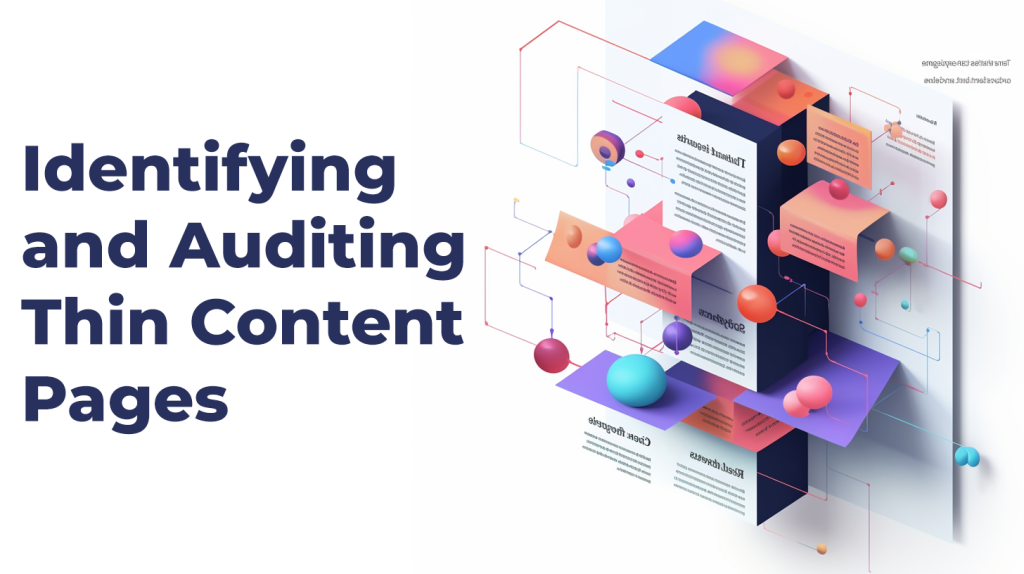
Identifying thin content pages can be a challenging task, especially when dealing with large websites that have thousands of pages. One way to start is by assessing the website’s performance on search engines and evaluating the amount of organic traffic received by each page. Pages that receive little to no views over time may indicate thin content.
Another useful approach is to check for pages that contain only a few words or lack original and valuable content. These could include category or tag pages, affiliate pages, or even duplicate content pages. Google’s Panda algorithm update specifically targets these types of pages and can significantly impact a website’s ranking.
Conducting a content audit is a critical step in identifying thin content pages. It involves reviewing all website content and categorizing it based on its relevance, value, quality, and purpose. This allows website owners to pinpoint which pages require some attention and optimization.
For instance, suppose you are the owner of an online store selling garden equipment. During your content audit, you notice several product categories with no description or only a few words describing the products. These would be potential candidates for thin content optimization.
Addressing thin content issues can take time and effort, but it is crucial for maintaining a healthy online presence. Failing to deal with thin content can cause severe consequences, including loss of visibility on search engines and decreased website traffic.
Some argue that identifying thin content is subjective since what may be deemed valuable or relevant by one user may not be so for another. While this is true to an extent, there are objective standards set by search engines such as Google that websites must follow to maintain their ranking.
Tools and Techniques for Content Analysis
Whether you’re conducting a full-scale content audit or merely looking for ways to optimize individual pages, several tools and techniques can help you analyze your website’s content. The following are some of the most popular ones:
– Copyscape: Checks for duplicate content on the web and within your website.
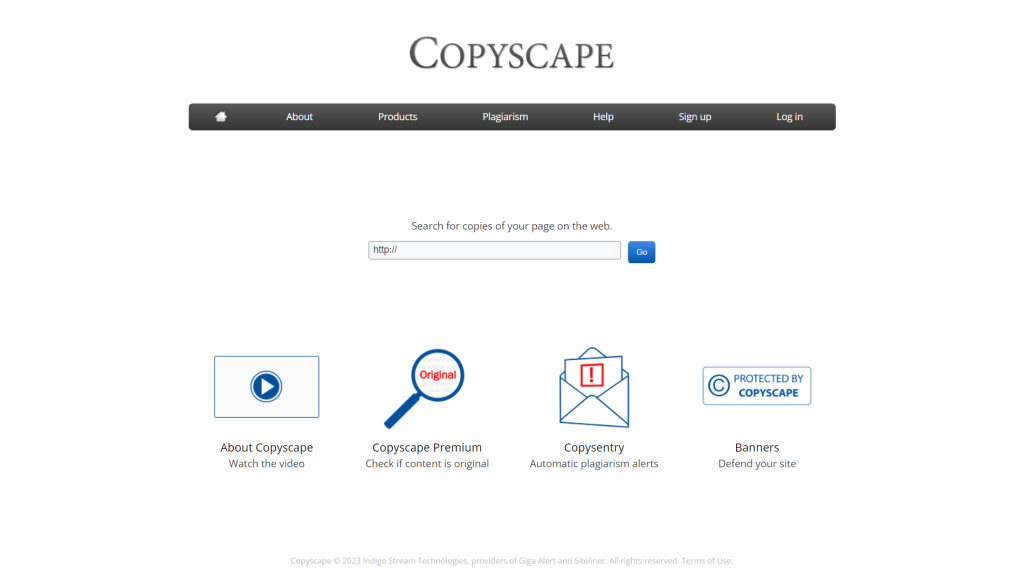
– Screaming Frog: Crawls your website to identify thin content, 404 errors, or other issues.
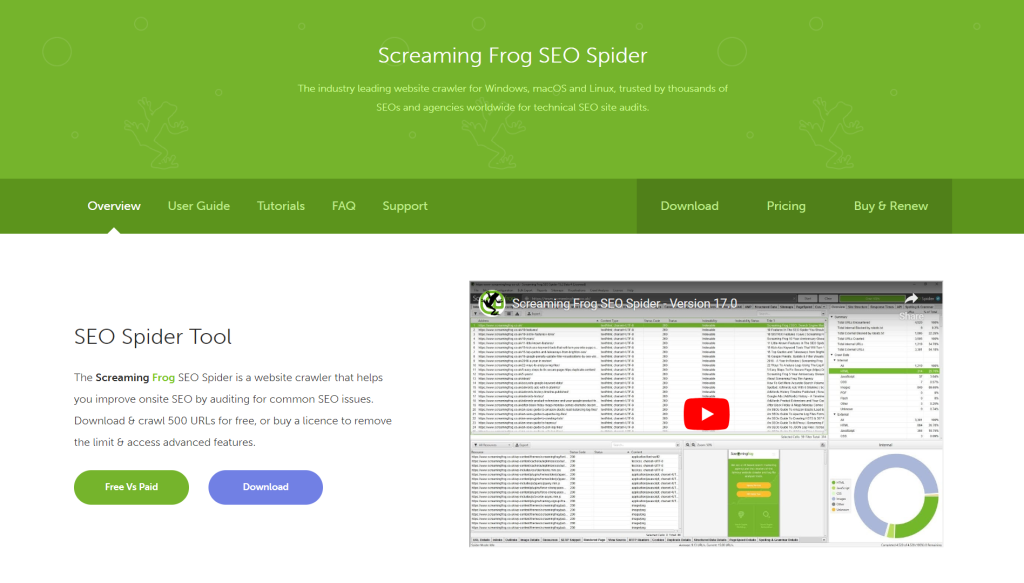
– Google Search Console: Provides insights on performance metrics such as clicks, impressions, and average position.
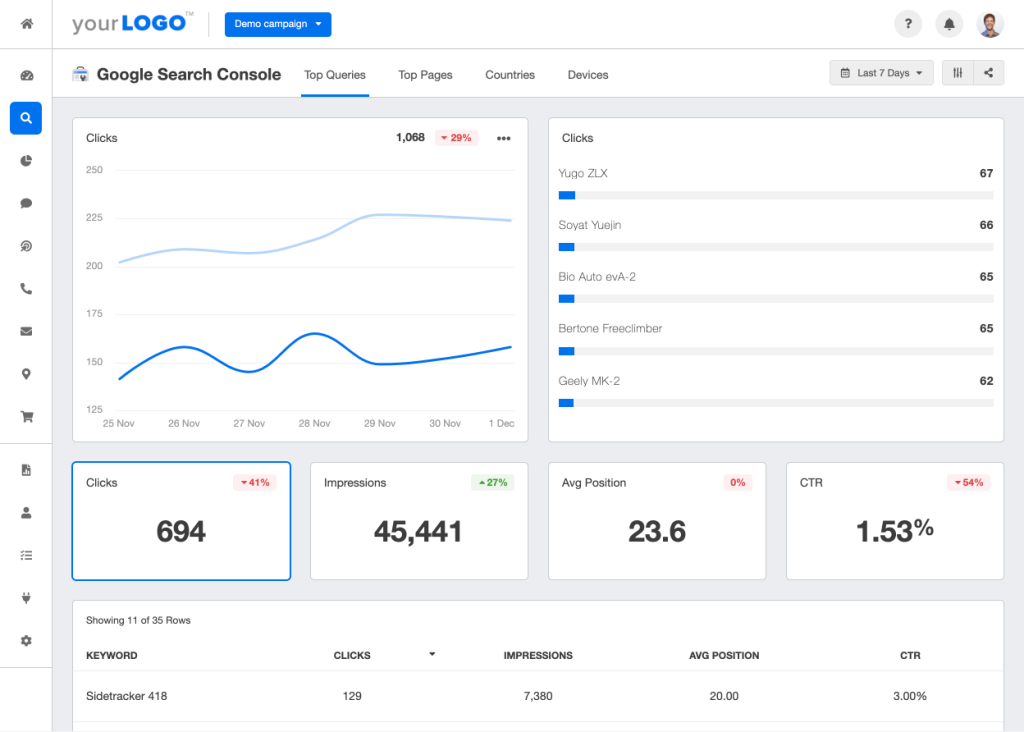
– Google Analytics: Tracks user behavior, including bounce rates, session duration, and pages per session.
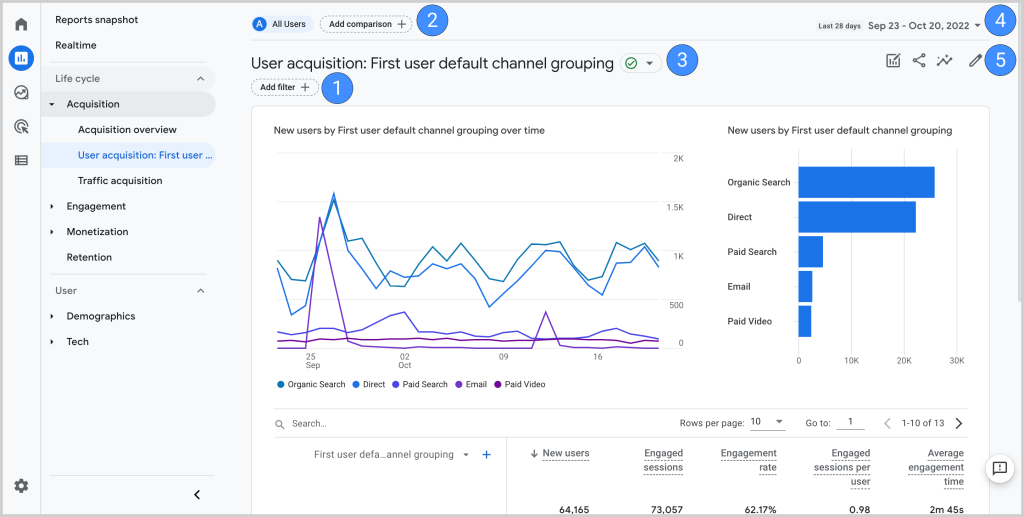
– Ahrefs: Analyzes traffic and backlinks to the website and identifies high-performing pages.
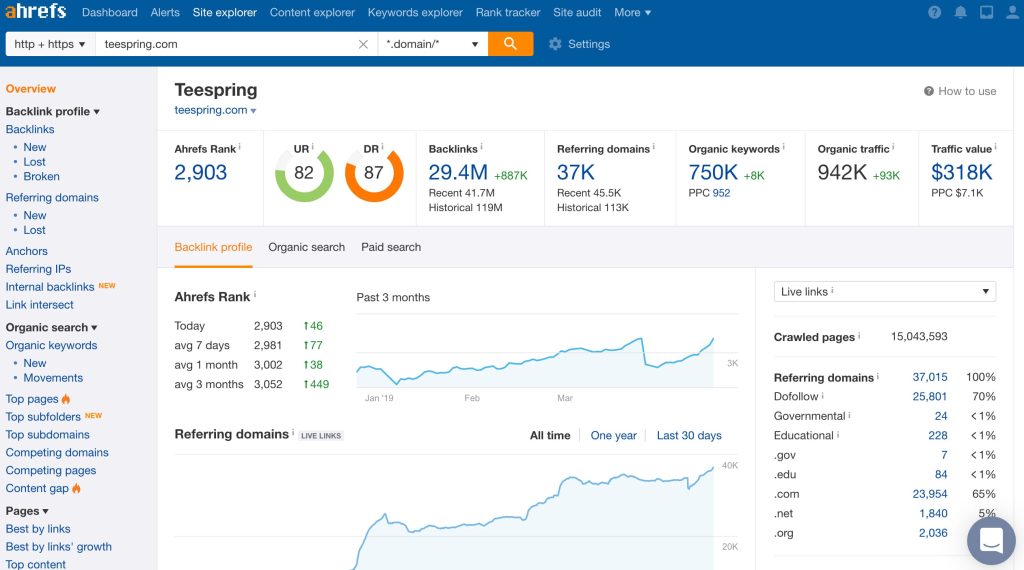
Using these tools can save a considerable amount of time and effort while providing valuable insights into the website’s performance on search engines.
For example, suppose one category page has an extremely high bounce rate. In that case, it may be necessary to perform a deep analysis using tools like Google Analytics or Ahrefs to understand why visitors are leaving that particular page.
Utilizing these tools can significantly improve efficiency when identifying thin content pages and evaluating overall website performance.
Some argue that relying too much on these tools can lead to overlooking essential details that only human analysis can provide. While it is true that these tools should not replace manual analysis completely, they are helpful resources for streamlining the process.
Strategies for Enhancing Thin Content

Thin content is often the product of a lack of resources or budget – particularly evident in small businesses that struggle to generate exclusive and valuable content. However, investing in enhancing thin content pages is crucial to maximize website traffic and SERP ranking. Here are some strategies to amplify your page’s relevance and authority.
One commonly underestimated strategy is to expand your website’s niche. If your website targets a narrow audience, it will run out of fresh ideas soon. To avoid redundant content, think about lateral topics and sub-topics that you could naturally write about without deviating greatly from your original audience. For instance, if your website is about pizzerias in New York City, you could consider writing about Italian food culture, pizza pairing with craft beer, or restaurant logistics. By broadening the scope of your content, you’ll gain more opportunities to write passionate and informative articles while improving your domain expertise.
Another way to enhance thin content pages is by adding detail-rich multimedia such as images, videos, or infographics. Multimedia doesn’t just make your content more appealing but also boosts its memorability and shareability. A study by BuzzSumo found that tweets with images received 150% more retweets than those without them. Moreover, visual aids can convey complex information faster and more efficiently than text-only articles – which keeps users’ attention longer on-page.
However, an obstacle that publishers might encounter when trying to improve thin pages through multimedia is scalability. Adding images or videos is a time-consuming process that requires both creative skills and technical knowledge – leading to additional costs. To tackle this issue, marketers should utilize available tools that can fast-track creating multimedia assets like video animations or infographics – such as Canva, Prezi Video, and Vyond.

Lastly, consider updating your thin pages with seasonal content. In the same way that shops change their window displays to match holidays or special events, websites should also update their content to relevant happenings. For example, updating a weak blog post about “Best Christmas Gifts” article by adding information relevant for the coming year will help you maintain the page’s relevance and keep it up-to-date. Moreover, utilizing seasonal trends improves your chances of getting more search traffic from people searching for trending products.
The strategies discussed above should not only help boost your SERP rankings but improve user experience and satisfaction – ultimately leading to improved conversions. However, ensuring originality and value in your thin content pages is essential to draw in readers and set yourself apart from competitors. Let’s explore this further.
- Investing in enhancing thin content pages is crucial to maximize website traffic and SERP ranking. Strategies to amplify your page’s relevance and authority include expanding your website’s niche, adding detail-rich multimedia, utilizing available tools, and updating thin pages with seasonal content. Originality and value in content are also essential to draw in readers and set yourself apart from competitors. By improving user experience and satisfaction, these strategies can ultimately lead to improved conversions.
Focus on Originality and Value
Originality and value are key elements that separate high-quality content from noise. Thin content can sometimes arise from publishing unoriginal articles packed with irrelevant or generic information – which works against content creation guidelines laid out by Google’s Panda Algorithm Update. To avoid this pitfall, here are some tips to add value to your thin content pages.
One simple method is by building an FAQ section covering the most frequently asked questions about your topic. Providing helpful answers at the beginning of your page not only helps users save time but demonstrates expertise and provides context for visitors unfamiliar with the subject matter. Moreover, including schema markup for FAQs can generate rich snippets in search results, elevating your page’s visibility – increasing chances for CTRs (click-through rates).
Another sophisticated way of adding value is hyperlinking towards relevant external sources – particularly scholarly articles and research papers. Linking out demonstrates that you care about providing opportunities for users to further explore the topic while being a trustworthy source of information. Additionally, outbound links have been found to be correlated with better SEO performance. Ahrefs suggests that linking to authoritative sources improves the website’s E-E-A-T (Experience, Expertise, Authoritativeness, Trustworthiness), which plays a significant role in achieving high SERP rankings.
However, some marketers might hesitate in linking out as they fear potentially losing their audience or traffic to external sources. While this is a valid concern – quality links attract backlinks from other high-quality domains leading to new audiences and higher domain authority. Moreover, linking out should be done judiciously and only towards trustworthy sources that match your content and interests.
Lastly, think about tackling evergreen topics in novel ways. Evergreen topics are subjects that do not age over time and continue to be popular across audiences. For instance, recipe blogs could tackle the topic of “Chocolate-Cake” by writing about various frosting styles or experimental ingredients like avocado or zucchini. By presenting topics differently, you’ll establish yourself as an innovative authority who makes readers look forward to visiting your site.
These strategies should help you enhance thin content pages and emphasize originality while providing value to your audience. Investing time and effort into creating high-quality content does pay off – as it works towards establishing your website’s trustworthiness, relevance, and overall authority with search engines. However, maintaining relevant content over time does require monitoring and maintenance – so let’s discuss more on this in our following section.
Monitoring and Maintaining Content Quality
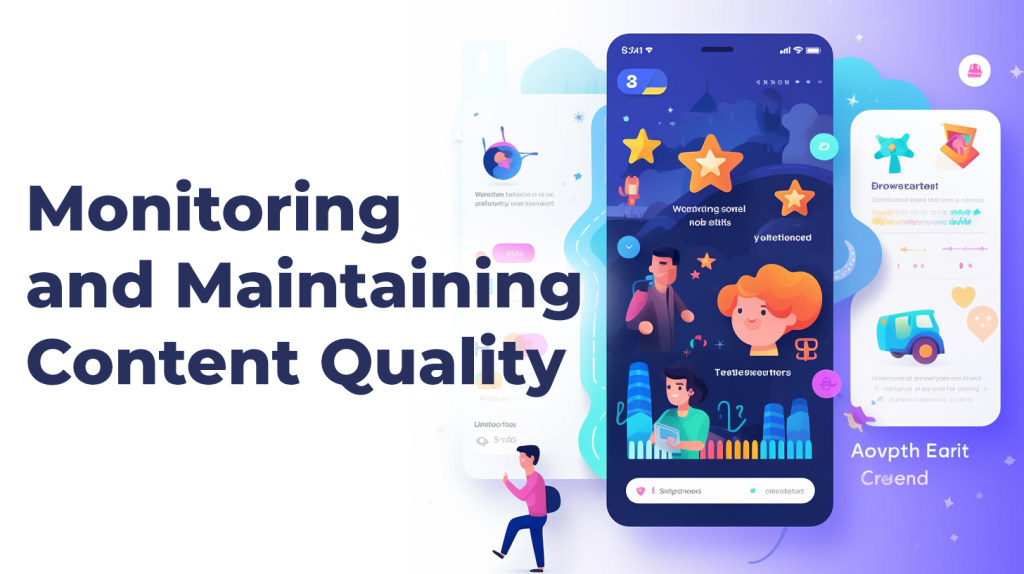
Creating high-quality content is not a one-time task but a continuous process, as user behavior, Google algorithms, and industry trends are always changing. Maintain the quality of your content by monitoring your website’s pages regularly and acting proactively to improve them accordingly. Here are some strategies for maintaining content quality:
Utilize Google Search Console
Google Search Console is an essential tool for webmasters who want to optimize their website’s performance in search results. It enables you to analyze your website’s data and identify areas where you can improve your SEO strategy. One major area that Google Search Console covers is providing you alerts regarding thin content, duplicate content, and crawl errors on your site. By monitoring these alerts daily, you can ensure that new issues don’t arise and address any issues promptly when they do.
One way to maintain the quality of your content is by updating it regularly. The fresher the content on your site is, the more favorably Google will view it. Ensure that all website pages are updated periodically with new information, statistics and visuals that are relevant to the topic at hand. You can refresh even older evergreen articles with more up-to-date information.
Consider User Feedback
Monitoring user feedback is an excellent way to understand what users like or dislike about your content. Use surveys or even comments section to invite feedback from visitors so you can learn how to offer greater value through new topics or angles you may not have considered before. However, keep in mind that readers may not always be right — their opinions might be subjective or emotionally induced; try to balance their suggestions with other available data.
Tend Your Garden Constantly
Think of your website like a garden – it needs constant pruning, weeding, fertilizing, watering and protection to yield its full potential. No garden will thrive if you just plant it and forget about it. Similarly, your pages need constant attention to produce good results in search engines. Take time to assess the metrics of your pages regularly, so that you can strategically modify content at the slightest hint of reduced performance.
With On-Page.ai’s advanced SEO optimization tool, updating your site content has never been easier and more effective. With features like on-page scans and stealth writing, you can ensure that all your website’s pages have original and value-packed material that ranks well in search engine algorithms. Further, with efforts put into monitoring content quality using On-Page.ai, upkeep of top-quality content and higher visibility is a breeze!
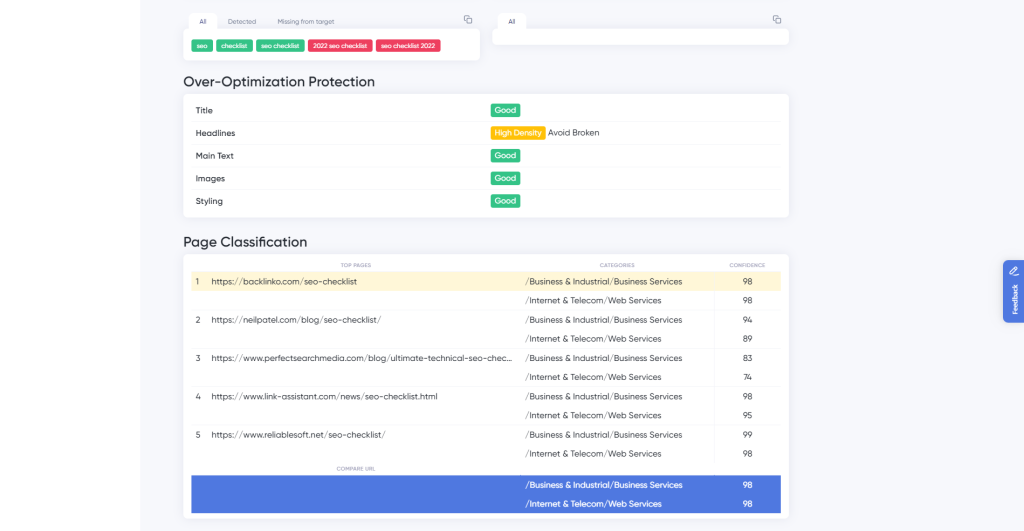
Answers to Common Questions with Explanations
What qualifies as “thin” content and how can it be identified?
Thin content is any page on a website that lacks substantial, valuable information for its intended purpose. To identify thin content, there are several factors to consider such as word count, uniqueness, relevance, and user engagement. A webpage with less than 300 words may be considered thin content while pages with duplicate or non-original content are also classified as thin.
In addition, Google’s algorithm continually searches for quality content that meets the needs of searchers. Websites with high-quality content tend to rank higher in search engine result pages, while sites with thin content rank much lower. Therefore, it is important to ensure that all pages on your website have sufficient information that provides value and interest to your users.
According to a study conducted by SEMrush, over 40% of websites in their database had thin content issues. This showcases how prevalent thin content can be and why it’s important to address the issue.
In conclusion, thin content can hurt your website’s ranking and visibility in search engines. Ensure that all web pages have relevant and valuable information for visitors by regularly conducting audits of your site’s pages.
What are some effective strategies for improving or removing thin content pages?
If you’re looking to improve or remove thin content pages, there are a few effective strategies to consider. Firstly, you can update existing content with additional information, images, or videos to make it more comprehensive and valuable to readers. This helps improve its relevance and authority in search engine rankings.
Another strategy is to merge several thin content pages into one comprehensive page that covers a topic in depth. This not only improves the quality of your website but also simplifies user navigation and boosts overall user experience and engagement on your site.
Lastly, if you find that some pages simply cannot be improved or added onto, removing them entirely may be the best option. Thin content can hinder your SEO efforts by negatively impacting site quality score and increasing bounce rates.
According to recent research conducted by SEMrush (2021), low-quality content contributes to poor user experiences and ultimately results in lost rankings. By implementing these strategies, you’ll increase the overall value of your site and guarantee that users will stay engaged with your content.
How does Google’s algorithm detect and penalize websites with thin or low quality content?
Google’s algorithm uses various signals to determine the quality and relevance of a website’s content. One major signal is the length and depth of the content on each page, as well as its uniqueness and usefulness to the reader. If a website has thin or low quality content – meaning it lacks substance and value – Google’s algorithm can detect this through machine learning and user behavior data.
Once identified, Google may penalize these websites by lowering their search engine ranking or even removing them from search results altogether. In fact, a study by SEMrush found that thin content was one of the top three most common reasons for Google penalties in 2021, affecting 17% of all penalized websites.
To avoid this penalty and improve SEO, website owners should focus on creating high-quality, comprehensive content that provides value to readers. This means conducting thorough research, using reliable sources, and writing original content that addresses a specific topic in detail. By doing so, websites can improve their chances of ranking higher in search results and attracting more visitors.
How can internal linking be utilized to improve the SEO of thin content pages?
Internal linking is crucial when it comes to managing thin content pages for SEO. By connecting relevant pages within your website, you can help search engines better understand the context of your site and improve overall user experience.
One way to leverage internal linking is by creating topic clusters. A topic cluster consists of a pillar page that provides an overview of a broad topic and links to multiple subtopics related to that pillar page. By interlinking these subtopics with relevant anchor text, you can guide search engines and users through your content more easily.
According to a study by HubSpot, websites with topic clusters generated 43% higher click-through rates than those without them. Additionally, interlinked pages receive more pageviews and have lower bounce rates compared to non-linked pages.
Another internal linking strategy involves incorporating breadcrumbs on your site. Breadcrumbs provide a hierarchical trail of the pages on your site and allow visitors to navigate back to previous pages easily. This not only improves user experience but also helps search engines crawl through your site more efficiently.
In conclusion, internal linking can significantly impact the SEO of your thin content pages. By leveraging topic clusters and breadcrumbs, you can help search engines better understand the context of your site while also improving overall user experience.
How does thin content affect a website’s overall SEO performance?
Thin content is the bane of existence for SEO professionals and website owners alike. It refers to pages on a website that have little to no valuable information, such as pages with low word counts, duplicate content, or weakly targeted keywords. Thin content can significantly affect a website’s overall SEO performance in several ways.
First, search engines such as Google utilize algorithms that prioritize quality content over thin ones. They are designed to deliver users with high-quality results that address their queries effectively. Websites with thin content are less likely to rank highly in search engine results pages (SERPs), resulting in lower organic search traffic.
In addition, having too many thin pages on a website can also harm its overall ranking potential. Google and other search engines evaluate entire websites’ value-based on the quality and relevancy of all of the pages on it collectively. Therefore, even if some pages on a site rank well, having several poor-quality or thin pages can drag down the website’s overall domain authority score.
Moreover, Google has become increasingly smarter in identifying low-quality pages on websites and penalizing them through various algorithm updates over the years such as Panda, Penguin, and Hummingbird. The Panda update specifically targets sites with thin content, lowering their ranks and affecting organic traffic.
Therefore, it is crucial for businesses to ensure they put forth valuable efforts into creating high-quality webpages throughout their site rather than aiming for quantity over quality. Quality content creation techniques like engaging keyword research and optimizing webpage elements like the URL structure, meta descriptions, titles tags, etc., should be implemented to improve a website’s organic visibility and better engage visitors.
In summary, thin content adversely affects a website’s SEO performance by reducing organic search traffic, decreasing domain authority scores while also attracting Google penalties due to low-quality content thresholds.
Keep creating fresh, high-value articles to avoid thin content and potential Google penalties. With the help of On-Page.ai content optimization tool, this tedious task becomes quick, easy and effective. Sign up today to improve your content creation process!




